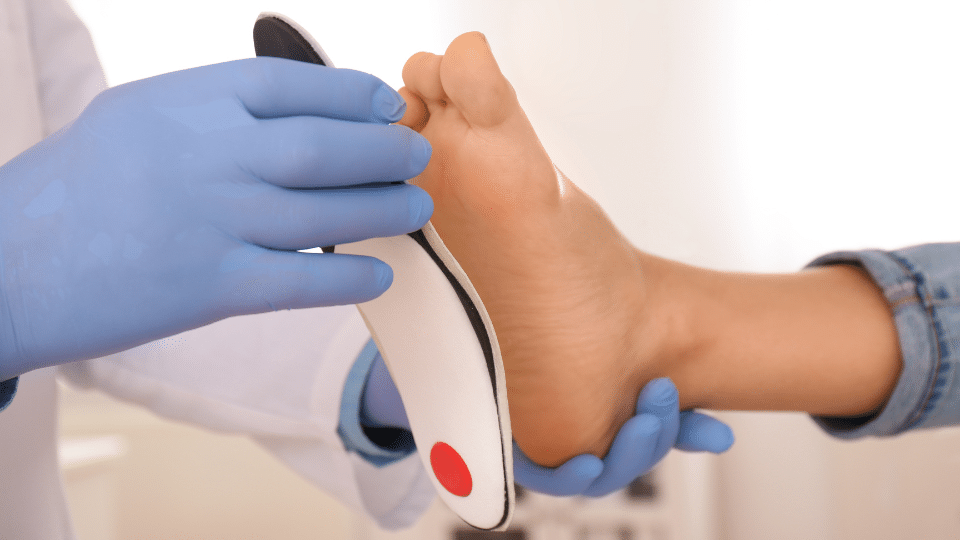Hallux limitus is a condition that affects the big toe joint, causing limited movement, pain, and stiffness. It is a common foot issue that can impact your ability to walk, run, or perform daily activities comfortably. The condition occurs when the joint at the base of the big toe (known as the metatarsophalangeal joint) loses its ability to move fully, leading to discomfort, swelling, and restricted motion.
At Fall Creek Foot & Ankle, we specialize in diagnosing and treating foot conditions like hallux limitus. In this article, we will explore what hallux limitus is, its symptoms, common causes, and the various treatment options available to help alleviate pain and restore joint mobility.
What Causes Hallux Limitus?
Hallux limitus typically develops when the metatarsophalangeal joint at the base of the big toe becomes stiff or damaged. This can occur due to a variety of factors, including:
1. Arthritis
The most common cause of hallux limitus is arthritis, particularly osteoarthritis, which occurs as the cartilage in the joint breaks down over time. This causes friction in the joint, leading to pain and reduced motion in the toe.
2. Injury or Trauma
A previous injury, such as a sprain, fracture, or dislocation, can cause lasting damage to the big toe joint. Over time, the joint may become stiff and less mobile, leading to hallux limitus.
3. Structural Abnormalities
Certain structural issues, such as abnormal foot mechanics or bony deformities, can put excessive pressure on the big toe joint. Flat feet, high arches, or a misaligned toe joint can increase the risk of developing hallux limitus over time. If you have flat feet, check out our Flat Feet Guide for more information on managing this condition and maintaining foot health.
4. Repetitive Stress
Repeated movements or activities that involve stress on the big toe: such as running, jumping, or wearing poorly fitted shoes, can contribute to the development of hallux limitus. Over time, this repetitive stress can wear down the joint, restricting its range of motion.
Symptoms of Hallux Limitus
The symptoms of hallux limitus can vary in severity, but common signs include:
1. Pain in the Big Toe
Pain, especially at the base of the big toe joint, is a primary symptom. The pain may worsen when walking, running, or pushing off with the toe. It can also become more intense during activities that require significant movement of the toe. For more details on when it’s time to seek professional care for foot pain, check out our Foot Pain: Common Causes and When to See a Specialist blog.
2. Stiffness in the Big Toe
A limited range of motion in the big toe is another hallmark of hallux limitus. The stiffness may make it difficult to bend the toe properly, particularly when performing activities that require toe flexibility, such as walking uphill or climbing stairs.
3. Swelling and Inflammation
The big toe joint may appear swollen or inflamed, especially during flare-ups or after activity. The inflammation can make the foot feel tender and sore, contributing to discomfort when wearing shoes.
4. Difficulty Wearing Certain Footwear
As the condition progresses, it may become challenging to wear shoes that apply pressure to the big toe. This is especially true for shoes with narrow toe boxes or high heels, which can exacerbate the pain and discomfort caused by hallux limitus.
Treatment Options for Hallux Limitus
The treatment for hallux limitus depends on the severity of the condition and the specific symptoms you’re experiencing. Options range from conservative care to surgical interventions for more advanced cases.
1. Conservative Treatments
For mild to moderate hallux limitus, conservative treatments are often effective in relieving pain and restoring mobility:
- Rest and Ice: Resting the foot and applying ice to the affected area can reduce inflammation and provide relief.
- Nonsteroidal Anti-Inflammatory Drugs (NSAIDs): Over-the-counter medications can help reduce pain and swelling.
- Orthotics: Custom-made insoles or arch supports can help distribute pressure more evenly across the foot, reducing stress on the big toe joint. Learn more about how custom orthotics can help with foot comfort and mobility by visiting our Custom Orthotics: The Key to Foot Comfort and Mobility page.
- Footwear Modifications: Wearing shoes with a wider toe box, proper arch support, and cushioning can help reduce pain and improve foot function. Avoiding high heels or tight shoes can also alleviate discomfort.
- Physical Therapy: Stretching exercises and strengthening routines can help improve the flexibility and strength of the affected toe joint.
2. Surgical Treatments
In more severe cases of hallux limitus, when conservative treatments do not provide sufficient relief, surgery may be necessary to restore joint function. Surgical options include:
- Cheilectomy: This procedure involves removing the bony growth or spurs that have formed around the toe joint. It can help improve the range of motion and reduce pain.
- Osteotomy: This surgery involves cutting and realigning the bones in the foot to restore proper alignment and alleviate pressure on the joint.
- Fusion (Arthrodesis): In cases where the joint is severely damaged, the bones may be fused together to provide stability and pain relief.
3. Post-Surgical Rehabilitation
After surgery, physical therapy and rehabilitation are crucial for restoring function and mobility to the toe. Exercises will help strengthen the joint, improve flexibility, and reduce the risk of complications.
Preventing Hallux Limitus

Preventing hallux limitus involves taking steps to protect your feet and avoid repetitive strain on the big toe joint:
- Wear Proper Footwear: Choose shoes with a wide toe box and adequate arch support. Avoid shoes with narrow toe boxes or high heels, which can put excess pressure on the toe joint. For guidance on selecting the right footwear to support foot health, visit our Shoes, Shoes, Shoes blog.
- Stretch Regularly: Stretching the feet and toes regularly can help maintain flexibility and reduce the risk of stiffness in the big toe joint.
- Maintain a Healthy Weight: Extra weight can place additional pressure on the feet, exacerbating existing conditions like hallux limitus. Maintaining a healthy weight can reduce stress on the feet and joints.
- Early Intervention: If you start experiencing foot pain or stiffness in the big toe, seek early treatment to prevent the condition from worsening. Early intervention can prevent long-term damage to the joint.
Conclusion: Finding Relief from Hallux Limitus
Hallux limitus is a common condition that can significantly affect foot function and mobility. By understanding its causes and symptoms, you can take proactive steps to manage the condition and find relief. With proper treatment and care, you can restore the range of motion in your big toe and alleviate the pain caused by hallux limitus.
If you’re experiencing pain or stiffness in the big toe or suspect you may have hallux limitus, it’s important to consult a podiatrist. A foot specialist can assess the severity of the condition and recommend appropriate treatments.
Contact us today to schedule an appointment at Fall Creek Foot & Ankle, where our team of podiatrists can help you manage foot conditions like hallux limitus.
